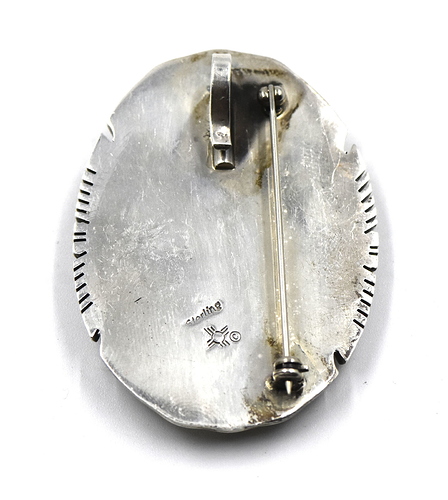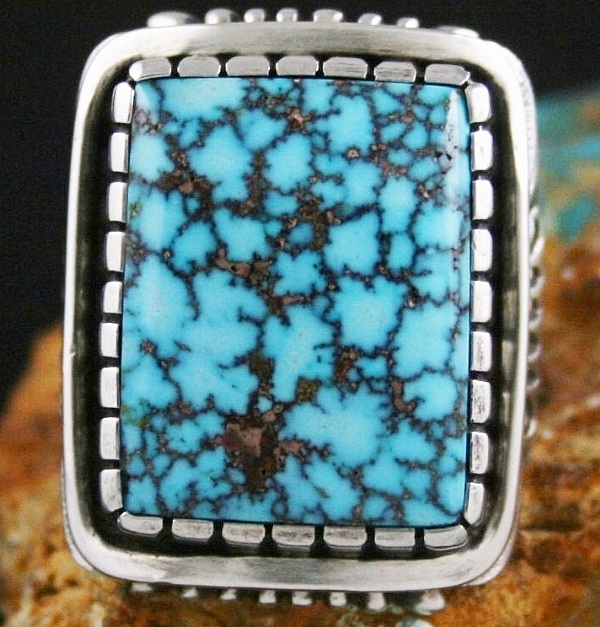I’m wondering if the stone in this pin is real turquoise or not. It has a stamp by Sun Silver West, but I’m also wondering about their reputation for using real stones or not.
Please let me know your thoughts. Thanks!
Welcome to the forum! Beautiful pindant, the stone looks legit to me, but i will defer to the experts who will probably pop by later. As to the mark, i don’t have any knowledge to share. Thanks for sharing it with us!
Real turquoise stone, and a pretty one. I’m thinking it may be a Chinese stone.
Thanks! How does that affect the value of the piece as far as the location it is from? Is there a guide to tell how much is too much to pay for a stone?
This is a complicated question. The value of turquoise depends on a lot of things, including grade or hardness, color, matrix pattern, whether it is natural (untreated) or stabilized or color enhanced in any way, mine, size/carat weight, when it was mined, and the jewelry it’s in if set. Generally speaking the most valuable turquoise is hard (gem grade) untreated turquoise from the classic southwestern US mines. However a lot of turquoise comes from China these days, and if it’s a high quality stone there is nothing wrong with that. Chinese turquoise often exhibits the black “spiderweb” matrix pattern that this stone has and is considered desirable—that’s why I think your stone might be Chinese. I’m going to refer you to this thread for an extensive discussion on Chinese turquoise:
I would have called this Chinese as well. Nice stone and real turquoise.


 )
)